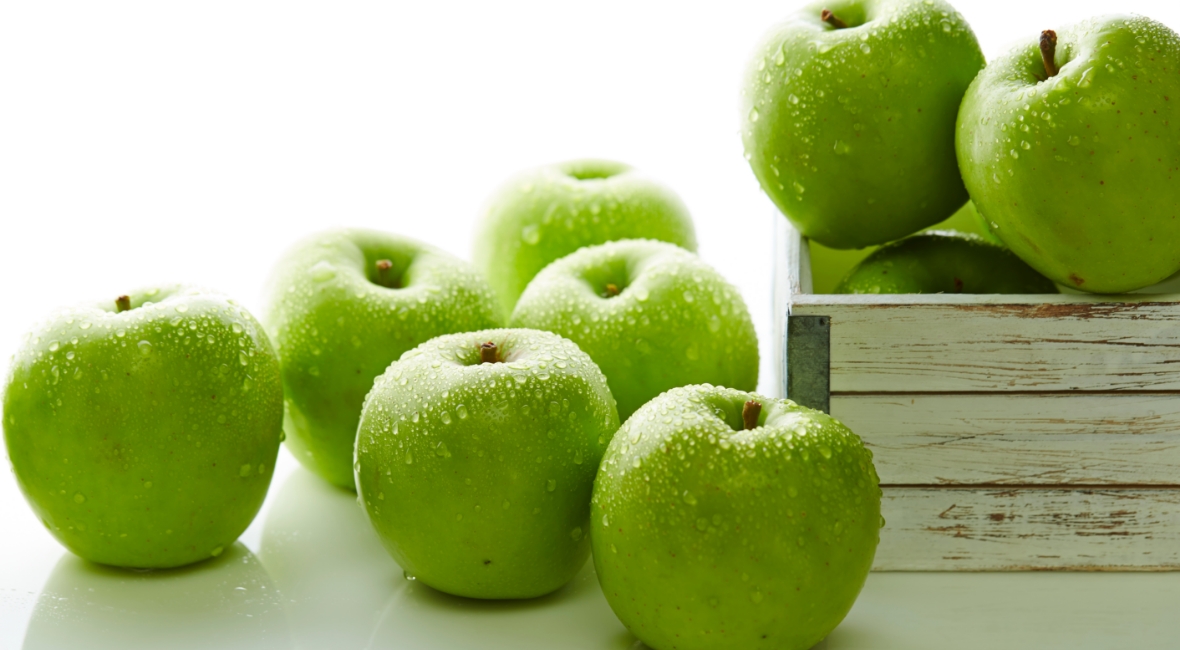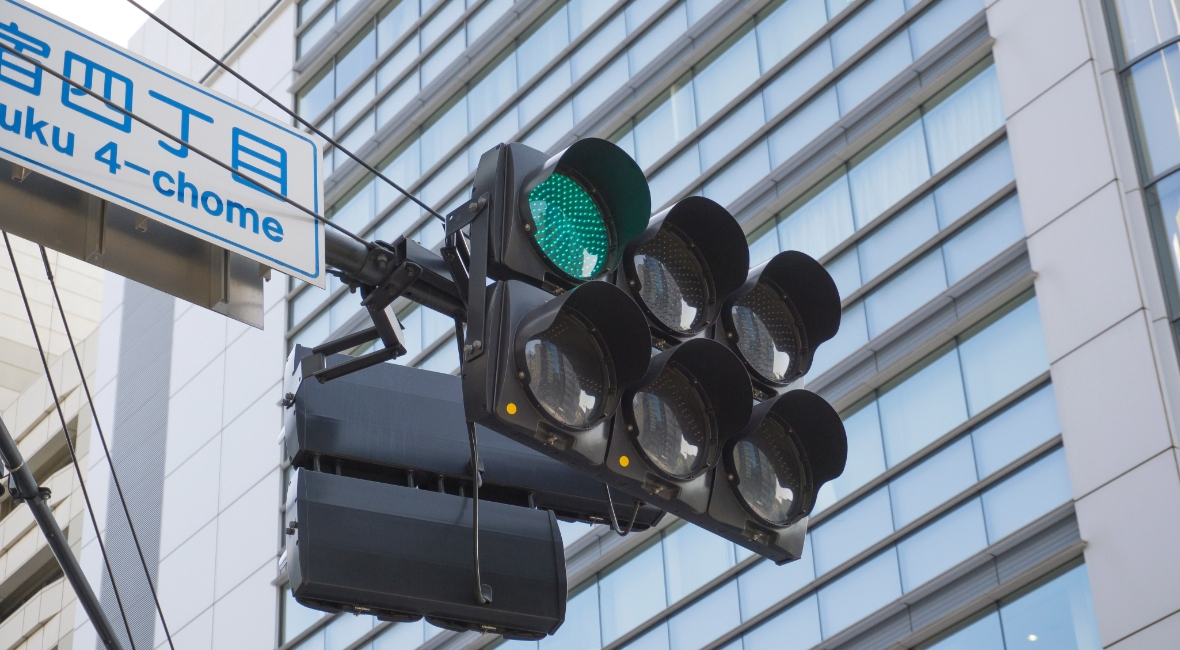Do you know how to call colors in Japanese?
| English | Japanese |
|---|---|
| Red | 赤 (Aka) |
| Yellow | 黄 (Ki) |
| Blue | 青 (Ao) |
| Green | 緑 (Midori) |
| Brown | 茶 (Cha) |
| Purple | 紫 (Murasaki) |
| Orange | オレンジ (Orenji) |
| Pink | ピンク (Pinku) |
| Black | 黒 (Kuro) |
| White | 白 (Shiro) |
Now how do you call the traffic signal (shingo) in the picture above in Japanese?
The answer is “Aoshingo (Blue traffic light).”
How about the apples (ringo) below.

The answer is “Aoringo (Blue apple).”
The following is a list of “green” colored items that are called “blue” in Japanese.
| English | Japanese |
|---|---|
| Green traffic light | 青信号 (Aoshingo) |
| Green apple | 青りんご (Aoringo) |
| Green juice | 青汁 (Aojiru) |
| Green leaf | 青葉 (Aoba) |
| Green caterpillar | 青虫 (Aomushi) |
| Green laver | 青海苔 (Aonori) |
| Green bamboo log | 青竹 (Aodake) |
| Green as in “inexperienced” | 青い (Aoi) |
Why are they called “Ao (blue)” instead of “Midori (green)”?
It is said that “green traffic light” came to be called “aoshingo” because when the first traffic light was installed in Japan, newspapers mistakenly wrote “aoshingo” and it spread.
Then, why did newspapers write “Aoshingo”? This is due to the history of the Japanese language. Originally, the Japanese language had only four color names: “aka (red)”, “ao (blue)”, “kuro (black)”, and “shiro (white)”, and “green” was included in “blue.” The word “green” is said to have appeared from the late Heian Period to the early Kamakura Period (around 1100-1200). Therefore, it has long been the custom in Japan to refer to green vegetables and plants as “ao.”
Today, “green” has become a common Japanese word, so anything green is called “midori”. So Luigi’s color in Super Mario Bros. is “midori”, not “ao”.


